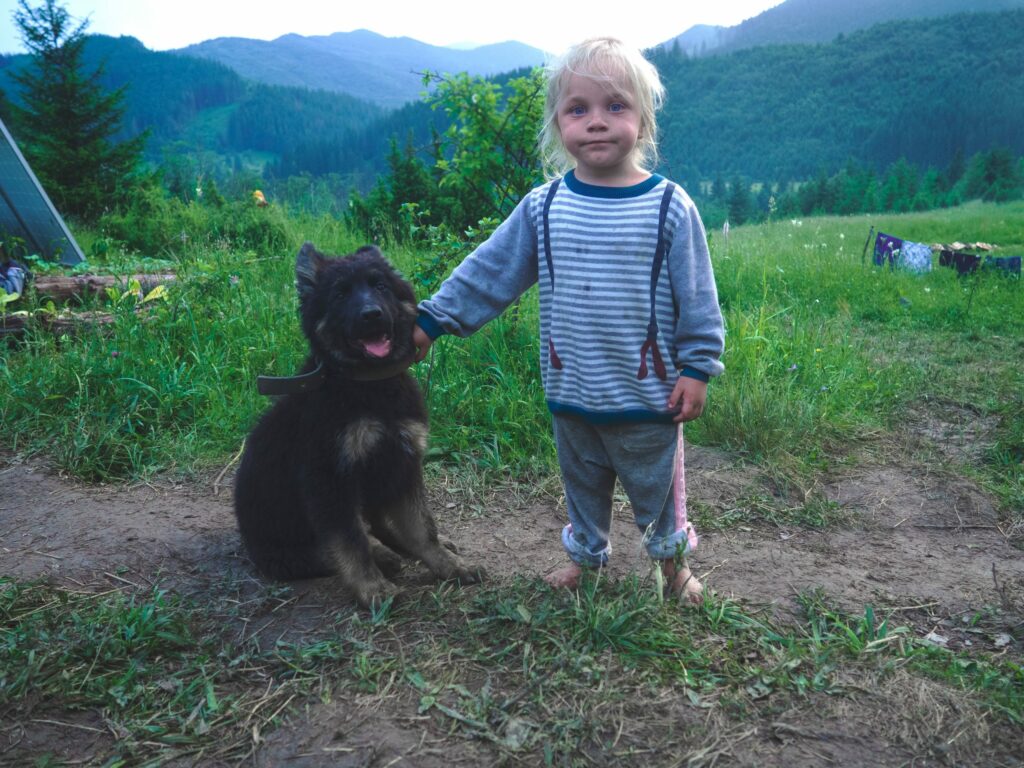Children and dogs are two of life’s most precious gifts. Yet sometimes, they don’t always mix well. A toddler yanking on an ear could cause a pup to snap, while heavy play could hurt your dog
FAQ
Pet insurance is a health insurance policy specifically for your pet. It helps cover the cost of veterinary care, including accidents, illnesses, and preventive care, depending on the plan you choose.
Now is the best time to get pet insurance because veterinary costs are rising, and having coverage can provide financial peace of mind. Early enrollment often means better rates and coverage before any pre-existing conditions develop.
Of course, kids and senior dogs can make a wonderful team, but taking precautions can ensure all stay safe, healthy, and happy. Whether you are adopting an older pet, welcoming a new baby, or introducing fur kids to any young humans, consider the following tips to ensure children and senior pets enjoy a pleasant experience free from harm.
Establish General Rules
Kids should know the basics of how to meet, greet, and behave around all dogs. Since every pet is different, establishing ground rules for children is essential in keeping all parties safe and secure.
- Be gentle. Quickly approaching a dog can lead them to feel threatened, which could result in unpredictable—and unpleasant—behavior. Senior dogs may feel especially uneasy as they may not be able to escape a perceived threat as swiftly as a younger, more agile dog. Older dogs may also be less likely to hear or see an oncoming greeter, so it’s especially important for kids to approach them gently.
- Never attempt to remove food or toys. Resource guarding is a common canine behavior that stems from their wild descendants. Animals who are successful at guarding food, mates, and territory have better chances at survival in the wild. In dogs, these behaviors can range from benign to aggressive, so it’s best to never invade personal space. While many senior dogs become immensely patient as they age, others become less tolerant, so help children understand this fact.
- Avoid eye contact. Staring into a dog’s eyes can spark aggressive behaviors. If a dog feels vulnerable or under attack, they may resort to physical assault—and a “hard stare” is often their first warning sign.
For an engaging and informative way to teach children about general canine body language and how to interact with dogs, consider these downloadable posters from renowned veterinary behaviorist, Dr. Sophia Yin.
- Fetch machines
- Blaster
- Sling
- Thrower
- Fetch machines
- Blaster
- Sling
- Thrower

Table of Contents
Always inquire about unfamiliar dogs

If the dog isn’t yours, ask its owner if there are any specific situations you should know about for your child. For instance, some pets thoroughly enjoy a good belly rub, but detest having their ears touched. Other dogs love taking treats from strangers, while some prefer a little more distance from unfamiliar faces. Senior dogs require a few additional considerations. Many are particularly sensitive in the hindquarters, back, or limbs, so children should avoid putting pressure on these areas. If vision or hearing loss is a concern, tell kids to avoid quick movements and loud noises. Above all, children need to learn patience around senior pups as this age group may not be as spry as the children who want to play with them.
Quick disclaimer: if you decide to purchase a SpotOn virtual fence for your pup through my referral link, I’ll earn a small commission at no extra cost to you. Also, this is not a sponsored review. I never delete the negative comments and talk about negative things compare to many other reviews.
Due to ongoing supply issues with electronics, the SpotOn fence might not occasionally go out of stock. If you see it available and decide it’s right for you, I recommend grabbing it right away.

Involve kids in senior pet care.
Giving children opportunities to care for a senior pet offers them a sense of responsibility and pride. Not to mention, the time they’ll spend bonding with their companion will no doubt lead to long-lasting memories. Provide age-appropriate tasks for children that can help strengthen their relationship with a senior dog, such as feeding, walking, or delicate play.
If the dog pet suffers from arthritis or another painful musculoskeletal condition, you could even instruct an older child how to give a gentle dog massage. As pets age, it’s likely they will require medications or supplements at some point, but avoid allowing children to administer these for safety reasons. Additionally, due to the risk of parasite transmission, leave the feces removal to an adult.
Give your senior dog a break
One of the most endearing qualities of senior dogs is their incredible patience, making them great companions for children. However, even the most tolerant older pets need a break from play, along with plenty of relaxation. Encourage kids to let senior dogs have the rest they need.
Instruct children how to protect themselves.
No matter how gentle your senior pup may be, they could snap under the right (or rather, wrong) circumstances. According to a study in the Journal of the American Medical Association, dog bites account for the second-most frequent cause of emergency room visits in children, many of which could likely be avoided with protective measures in place. Teach children to calmly walk away or stand like a tree with their hands at their sides if confronted by a nervous or barking dog. If knocked down, instruct kids to curl into a ball, protecting their head and neck.
Consider obedience training.
Whoever said, “you can’t teach an old dog new tricks” may not have known what motivated their pet. With the right reward, you can certainly teach an older dog good manners, basic commands, and even fun new skills. Obedience training later in life can help strengthen your pet’s confidence and their relationship with family members, too. Allow children to participate in this unique experience by bringing them along to training. Your senior pet will love having a job to do, and the mental stimulation provides an excellent way to keep his brain keen and sharp.
Supervise interactions.
While kids and senior pets can go hand-in-paw, their interactions should be supervised at all times. Younger children are less capable of reading canine body language and may not understand the concept of gentle handling. And, while older kids are more apt to understand the proper way to interact with dogs, aging pets can become unpredictable if cognitive changes arise—a common development in senior dogs. Generally speaking, though, with proper guidance, kids and senior pets can be the best of friends.
Sources:
Weiss HB, Friedman DI, Coben JH “Incidence of dog bite injuries treated in emergency departments,” in the JAMA 1998;279:53.
https://drsophiayin.com/blog/entry/free-downloads-posters-handouts-and-more/
https://www.avma.org/about/dog-bite-prevention.aspx/teaching-children-how-prevent-dog-bites
https://www.petmd.com/dog/behavior/dog-staring-everything-you-want-know
Pros and Cons at Glance
- Financial Protection
- Access to Quality Care
- Peace of Mind
- Preventive Care Options
- Monthly Premiums
- Exclusions and Limitations
- Upfront Payments
- Complex Policies
Advantages of Pet Insurance

Pet insurance helps cover the cost of unexpected veterinary bills for accidents and illnesses, protecting you from significant out-of-pocket expenses. Monthly premiums make it easier to budget for your pet’s healthcare needs.
Insurance allows you to afford a wider range of treatments and procedures, including emergency care, surgeries, and specialist consultations. Some plans include coverage for preventive care such as vaccinations, dental cleanings, and annual check-ups.
Disadvantages of Pet Insurance

The need to pay monthly premiums can add up, and if your pet remains healthy, you might feel like you’re not getting your money’s worth. Pet insurance typically does not cover pre-existing conditions, which can be a significant drawback if your pet has ongoing health issues.
Certain policies exclude hereditary or breed-specific conditions, limiting the coverage available. Most pet insurance plans operate on a reimbursement basis, meaning you must pay vet bills upfront and then wait for reimbursement, which can take time.
Author
Ryan
Writer


